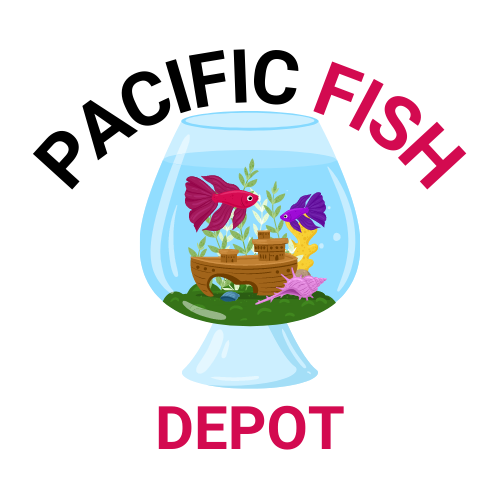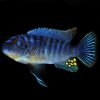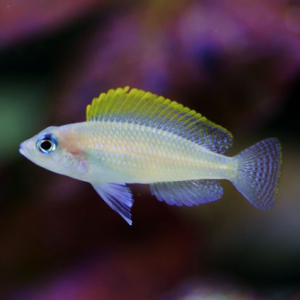No products in the cart.
Orange Leleupi Cichlid
$35.99
Care Level Easy
Temperament Semi-aggressive
Color Form Orange
Diet Omnivore
Water Conditions 72-82° F, KH 10-20, pH 7.8-9.0
Max. Size 4″
Origin Farm Raised
Family Cichlidae
Minimum Tank Size 50 gallons
Compatibility View Chart
Orange Leleupi Cichlid (Neolamprologus leleupi)
The Orange Leleupi Cichlid is one of the most striking freshwater fish from Lake Tanganyika in East Africa. Known for its brilliant, almost neon-orange coloration, this species adds an instant burst of color and energy to any aquarium. The intense yellow-orange shades stay vivid throughout the fish’s life, making it a favorite for aquarists who want an eye-catching yet manageable African cichlid.
In the wild, the Orange Leleupi is found along rocky shorelines, where it darts between crevices and caves in search of food. Its streamlined body and alert behavior make it a fascinating fish to watch, especially when it’s exploring or defending its territory. Growing to about 3–4 inches (7–10 cm) in length, the Leleupi is small enough for mid-sized tanks but still boasts plenty of personality.
The Orange Leleupi thrives in aquariums that replicate its natural rocky habitat. A tank with stacked rocks, caves, and shaded hideouts will help them feel secure while allowing them to display natural behaviors. They are moderately territorial, especially when breeding, so they are best housed with other Tanganyikan cichlids of similar size and temperament.
Water quality is important—these fish prefer alkaline, mineral-rich conditions similar to Lake Tanganyika, with a pH between 7.8 and 9.0 and temperatures between 24–27°C (75–80°F). They are hardy once settled, making them suitable for aquarists with some cichlid-keeping experience.
Feeding is simple, as they will accept high-quality cichlid pellets, frozen foods like mysis shrimp and krill, and occasional live treats. A varied diet helps keep their coloration bright and their immune systems strong. With the right care, the Orange Leleupi can live for up to 8–10 years, offering years of vivid beauty in your aquarium.
Frequently Asked Questions (FAQs)
1. How big do Orange Leleupi Cichlids get?
They usually reach 3–4 inches in length.
2. Are they aggressive?
They are moderately territorial, particularly during breeding, but can coexist with similar Tanganyikan species.
3. What should I feed them?
A mix of quality cichlid pellets, frozen crustaceans, and occasional live foods.
4. Can they live in a community tank?
Yes, if the community is made up of other compatible African cichlids.
5. How long do they live?
With proper care, they can live for up to 10 years.














Reviews
There are no reviews yet.